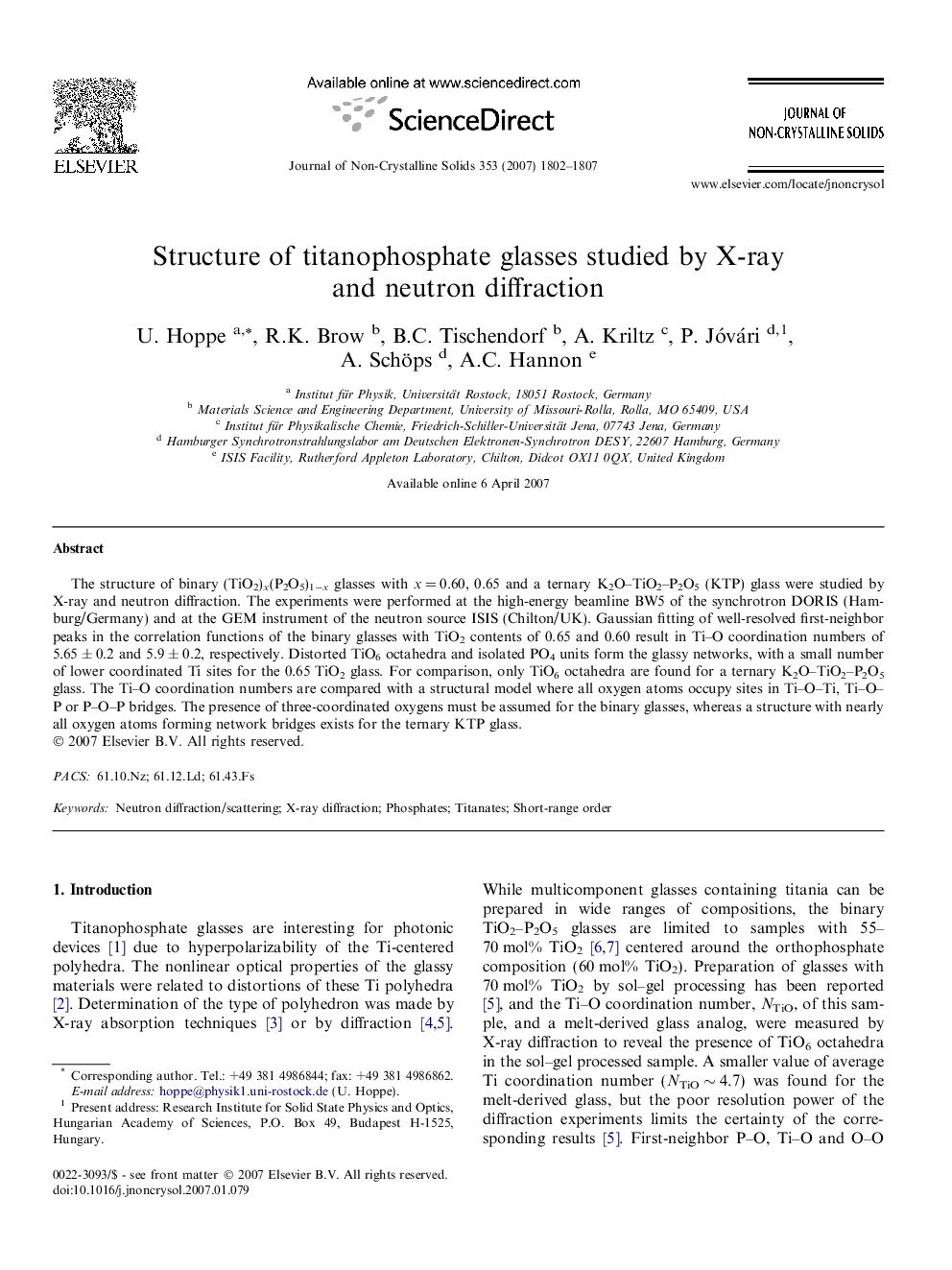| Article ID | Journal | Published Year | Pages | File Type |
|---|---|---|---|---|
| 1485360 | Journal of Non-Crystalline Solids | 2007 | 6 Pages |
The structure of binary (TiO2)x(P2O5)1−x glasses with x = 0.60, 0.65 and a ternary K2O–TiO2–P2O5 (KTP) glass were studied by X-ray and neutron diffraction. The experiments were performed at the high-energy beamline BW5 of the synchrotron DORIS (Hamburg/Germany) and at the GEM instrument of the neutron source ISIS (Chilton/UK). Gaussian fitting of well-resolved first-neighbor peaks in the correlation functions of the binary glasses with TiO2 contents of 0.65 and 0.60 result in Ti–O coordination numbers of 5.65 ± 0.2 and 5.9 ± 0.2, respectively. Distorted TiO6 octahedra and isolated PO4 units form the glassy networks, with a small number of lower coordinated Ti sites for the 0.65 TiO2 glass. For comparison, only TiO6 octahedra are found for a ternary K2O–TiO2–P2O5 glass. The Ti–O coordination numbers are compared with a structural model where all oxygen atoms occupy sites in Ti–O–Ti, Ti–O–P or P–O–P bridges. The presence of three-coordinated oxygens must be assumed for the binary glasses, whereas a structure with nearly all oxygen atoms forming network bridges exists for the ternary KTP glass.
